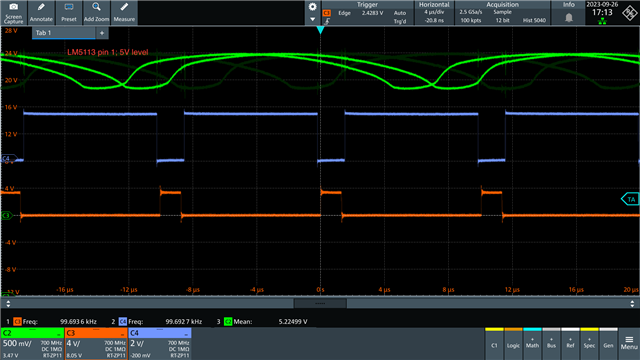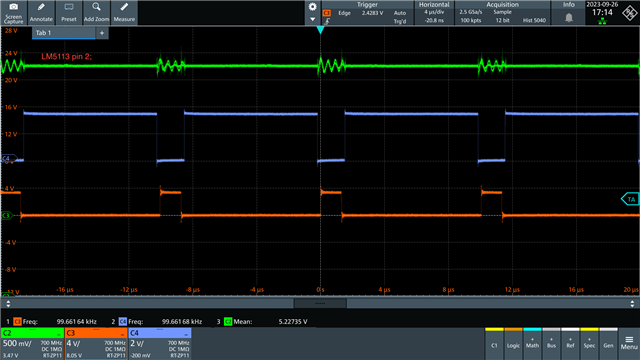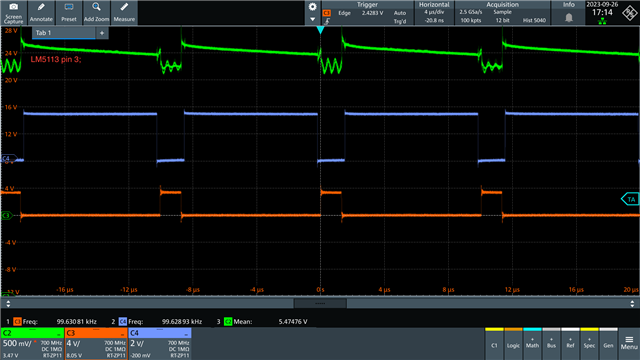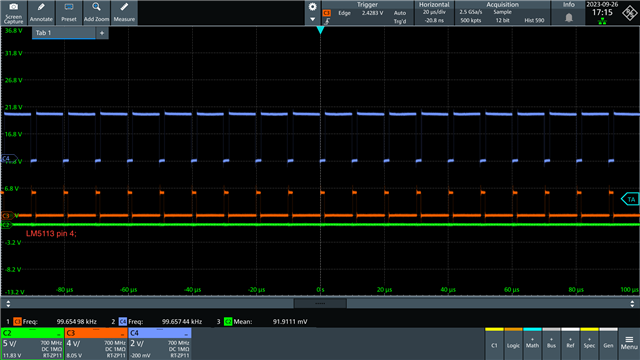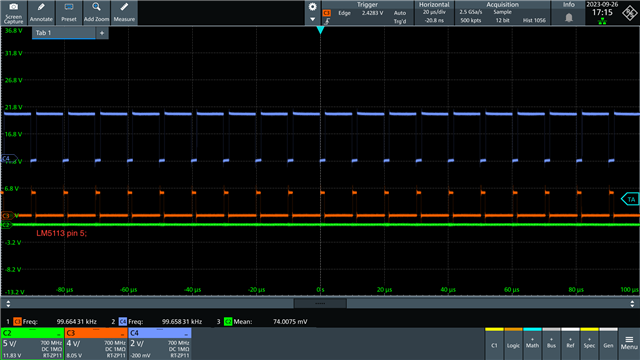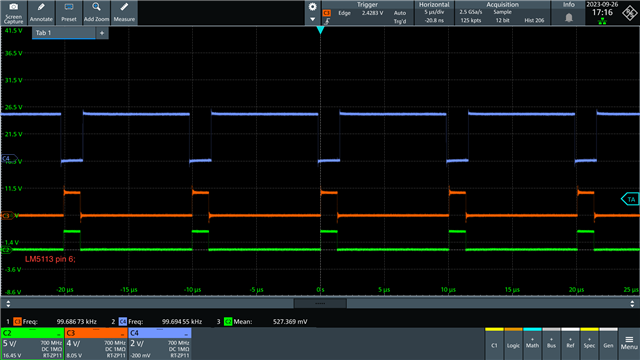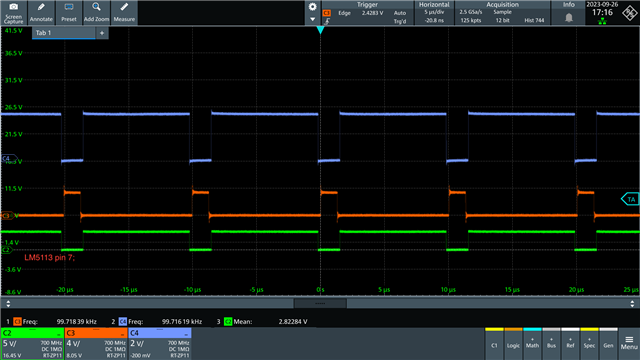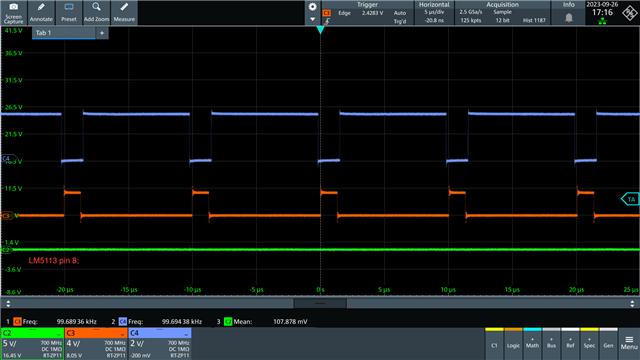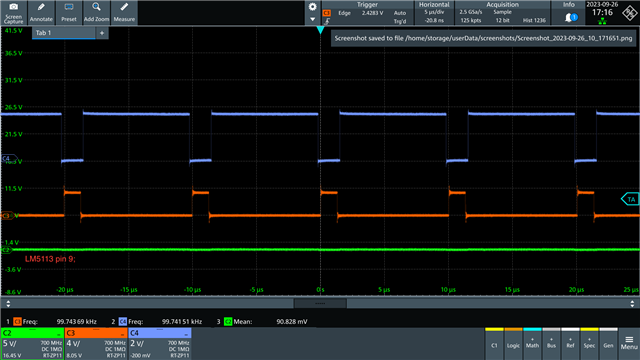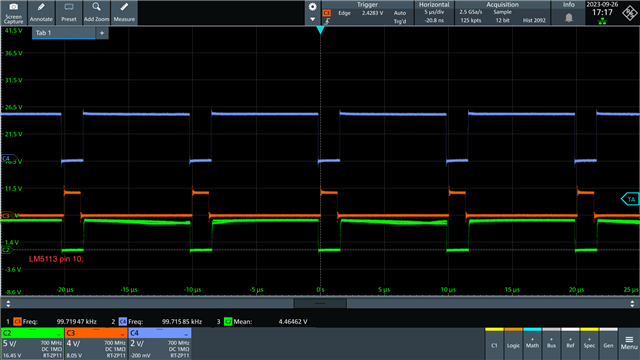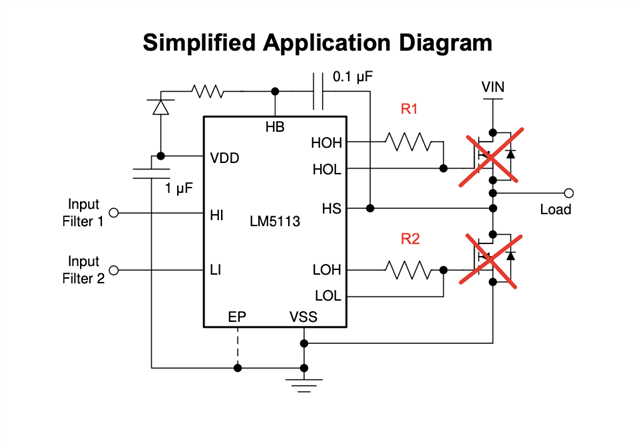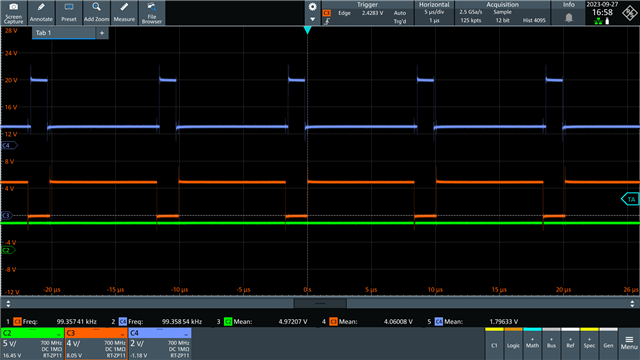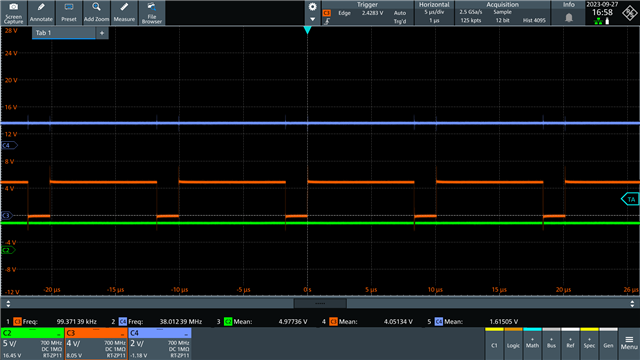Other Parts Discussed in Thread: LMG1205, LMG1210, LMG1205HBEVM, , LM5017
Dear TI support team,
We are currently on a stage of firmware development for our own DC/DC converter based on dsPIC33CK256MP202. I’m using simple project code based on data sheet example “High-Resolution PWM with Fine Edge Placement” p.123, 5.3 Simple Complementary PWM Output mode. During FW testing on the device, I’m observing short on transistors on PWM1H part of the circuit, after that I can’t move forward of the development process.
Our project based on https://epc-co.com/epc/products/demo-boards/epc9143 1
Drivers: LM5113SD
Transistors: EPC2306 High side, EPC2302 low side.
Technical parameters: Voltage input: 36…58V Voltage output: 10.8…13.2V Rated power: 1000W Output current: 85A Quantity phases: 2 pcs Protection: UVLO, OVP, OCP, OTP Frequency: 500 kHz Type topology: Synchronous Buck DSP controller: dsPIC33CK Type transistors: GaN
We have some discussion with Microchip support, they suggest to ask TI support..
During debug process, I unsoldered transistors and after that I can safely observe waveform on oscilloscope, please find photo in attachment.
green/yellow input from dspic33 to driver, blue and red output from driver to transistors gates.
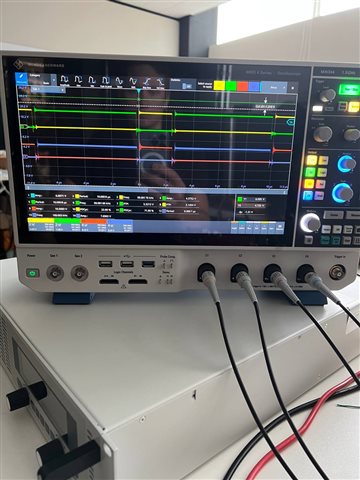
Some additional info about debug process:
We connected constant voltage power supply to 12V brick output pins in order to put 12V on it's output and check waveform from drivers output.
- It goes to constant 12V, straight line, no PWM from LM5113SD,
- Then we tried to decrease voltage level on power supply and after that we observe that PWM signal becomes normal when we have 1.4V from power supplier.
Please help to find solution, Thank you.


